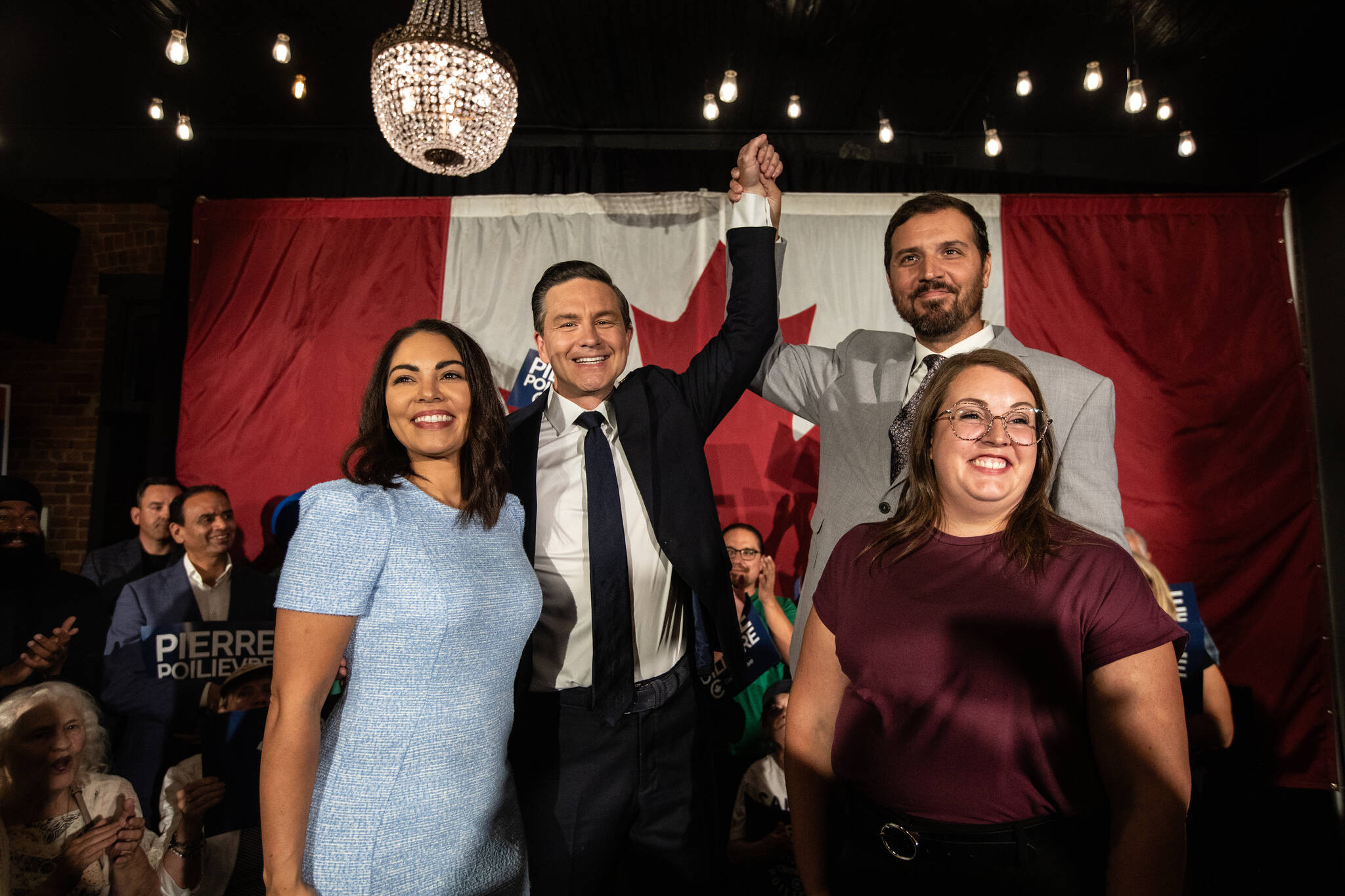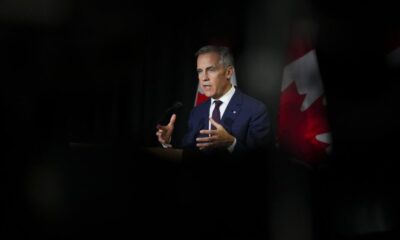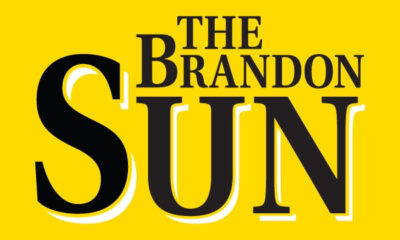Politics
Pierre Poilievre Wins Alberta Byelection, Faces Leadership Challenges

Pierre Poilievre, the leader of the Conservative Party, has secured a significant political victory by winning the byelection in the Alberta riding of Battle River-Crowfoot with over 80 percent of the popular vote. This win marks his return to Parliament following the Conservative Party’s defeat in the federal election held in April 2023. While this victory restores some legitimacy to his leadership, it is crucial to recognize that it represents only the beginning of a long journey for Poilievre and the Conservatives.
The byelection’s outcome reflects a strong showing for Poilievre, as he successfully navigated his first major test of leadership after the April loss. His victory not only reinstates him in Parliament but also affirms the Conservative Party’s stronghold in a region that has historically favored Conservative candidates. Damien Kurek, the previous Conservative candidate, received nearly 83 percent of the vote earlier this year, illustrating the consistent support for the party in this predominantly rural riding.
However, while the results appear impressive, they should not be overstated. The byelection in Battle River-Crowfoot is considered one of the safest Conservative seats in Canada, where candidates often secure at least 70 percent of the vote. This context suggests that Poilievre’s success is more about maintaining existing support rather than signaling a broader comeback for the party following its recent electoral loss.
Voter turnout in byelections typically hovers around a third, leading to localized dynamics that can significantly influence outcomes. The Conservative Party, while benefiting from its established presence in the region, faces challenges stemming from internal dissent and skepticism regarding Poilievre’s ability to address the community’s unique needs. Many residents have expressed concerns about his history as an urban politician and whether he can effectively represent rural interests.
Despite these challenges, Poilievre’s victory was not significantly threatened, as he defeated 216 other candidates to secure his position. His ability to mobilize support from voters demonstrates the party’s enduring appeal, albeit more as a reflection of party loyalty than personal endorsement of his leadership.
The coming months will be pivotal for Poilievre as he prepares for a mandatory leadership review scheduled for January 2024. Since the federal election, the Conservatives have struggled to identify a clear path forward in Canada’s evolving political landscape. While Poilievre has focused on regional concerns, the center of political gravity has shifted toward Prime Minister Mark Carney, who is currently enjoying considerable public confidence.
Carney’s administration is navigating complex negotiations with the United States and has garnered support for policies that resonate with aspects of the Conservative platform. Historically, Conservative leaders have been swiftly replaced following electoral defeats, as seen with Poilievre’s predecessors, Andrew Scheer and Erin O’Toole. However, Poilievre’s situation is somewhat unique due to the absence of a clear successor who can unite party factions and attract undecided voters.
As Poilievre settles into his role in the House of Commons, he must leverage this platform to address ongoing issues and articulate a vision that resonates with a diverse electorate. The dynamics within Carney’s coalition reflect a defensive posture, highlighting potential vulnerabilities that Poilievre could capitalize on in future political discourse.
The leadership review in January will be a critical moment for Poilievre and the Conservative Party. As the political landscape shifts, questions remain regarding the party’s direction. Will it maintain the libertarian populism that has characterized recent years, or will it pivot towards a more interventionist approach, embracing pro-worker policies and a stronger focus on cultural issues?
In the meantime, the Conservative Party has initiated discussions around immigration policy and has aligned itself with striking workers, reflecting a potential shift in tone. The outcomes of these strategic decisions will shape the party’s identity and electoral viability in the years to come, as it seeks to regain prominence in a changing political environment.
-

 Politics4 weeks ago
Politics4 weeks agoSecwepemc First Nation Seeks Aboriginal Title Over Kamloops Area
-

 World5 months ago
World5 months agoScientists Unearth Ancient Antarctic Ice to Unlock Climate Secrets
-

 Entertainment5 months ago
Entertainment5 months agoTrump and McCormick to Announce $70 Billion Energy Investments
-

 Science5 months ago
Science5 months agoFour Astronauts Return to Earth After International Space Station Mission
-

 Lifestyle5 months ago
Lifestyle5 months agoTransLink Launches Food Truck Program to Boost Revenue in Vancouver
-

 Technology3 months ago
Technology3 months agoApple Notes Enhances Functionality with Markdown Support in macOS 26
-

 Lifestyle3 months ago
Lifestyle3 months agoManitoba’s Burger Champion Shines Again Amid Dining Innovations
-

 Top Stories2 months ago
Top Stories2 months agoUrgent Update: Fatal Crash on Highway 99 Claims Life of Pitt Meadows Man
-

 Politics4 months ago
Politics4 months agoUkrainian Tennis Star Elina Svitolina Faces Death Threats Online
-

 Sports5 months ago
Sports5 months agoSearch Underway for Missing Hunter Amid Hokkaido Bear Emergency
-

 Politics5 months ago
Politics5 months agoCarney Engages First Nations Leaders at Development Law Summit
-

 Technology5 months ago
Technology5 months agoFrosthaven Launches Early Access on July 31, 2025





















